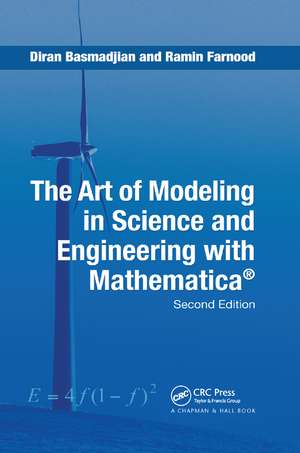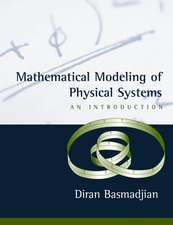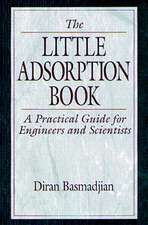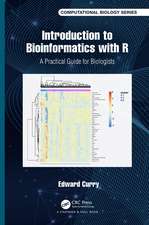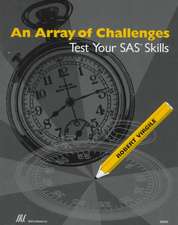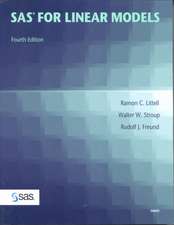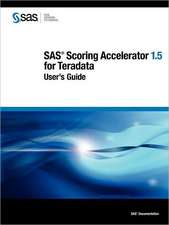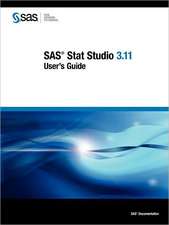The Art of Modeling in Science and Engineering with Mathematica
Autor Diran Basmadjian, Ramin Farnooden Limba Engleză Paperback – 7 oct 2019
These features and more make the book the perfect tool for resolving three common difficulties: the proper choice of model, the absence of precise solutions, and the need to make suitable simplifying assumptions and approximations. The book covers a wide range of physical processes and phenomena drawn from various disciplines and clearly illuminates the link between the physical system being modeled and the mathematical expression that results.
| Toate formatele și edițiile | Preț | Express |
|---|---|---|
| Paperback (1) | 493.07 lei 6-8 săpt. | |
| CRC Press – 7 oct 2019 | 493.07 lei 6-8 săpt. | |
| Hardback (1) | 1343.94 lei 6-8 săpt. | |
| CRC Press – 18 aug 2006 | 1343.94 lei 6-8 săpt. |
Preț: 493.07 lei
Preț vechi: 616.34 lei
-20% Nou
Puncte Express: 740
Preț estimativ în valută:
94.35€ • 100.89$ • 78.67£
94.35€ • 100.89$ • 78.67£
Carte tipărită la comandă
Livrare economică 17 aprilie-01 mai
Preluare comenzi: 021 569.72.76
Specificații
ISBN-13: 9780367390464
ISBN-10: 0367390469
Pagini: 509
Dimensiuni: 156 x 234 x 28 mm
Greutate: 0.45 kg
Ediția:2nd edition
Editura: CRC Press
Colecția Chapman and Hall/CRC
ISBN-10: 0367390469
Pagini: 509
Dimensiuni: 156 x 234 x 28 mm
Greutate: 0.45 kg
Ediția:2nd edition
Editura: CRC Press
Colecția Chapman and Hall/CRC
Public țintă
Professional Practice & DevelopmentCuprins
A First Look at Modeling. Analytical Tools: The Solution of Ordinary Differential Equations. The Use of Mathematica in Modeling Physical Systems. Elementary Applications of the Conservation Laws. Partial Differential Equations: Classification, Types, and Properties — Some Simple Transformations. Solution of Linear Systems by Superposition Methods. Vector Calculus: Generalized Transport Equations. Analytical Solutions of Partial Differential Equations.
Notă biografică
Basmadjian, Diran; Farnood, Ramin
Descriere
The Art of Modeling in Science and Engineering with Mathematica® helps readers overcome three common difficulties: the proper choice of model, the absence of precise solutions, and the need to make suitable simplifying assumptions and approximations. It covers a wide range of physical processes and phenomena drawn from various disciplines and clearly illuminates the link between the physical system being modeled and the mathematical expression that results. This second edition incorporates the use of Mathematica ® in various applications. It also includes new examples on HIV, the rate of carbon dioxide emission to the atmosphere, the manufacture of silicon chips, and the dynamics of hot air balloons and rockets.
